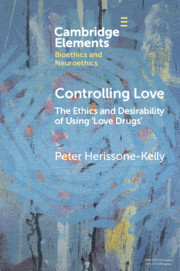Element contents
Controlling Love
Published online by Cambridge University Press: 25 August 2022
Summary
- Type
- Element
- Information
- Online ISBN: 9781009299060Publisher: Cambridge University PressPrint publication: 15 September 2022
References
- 12
- Cited by



